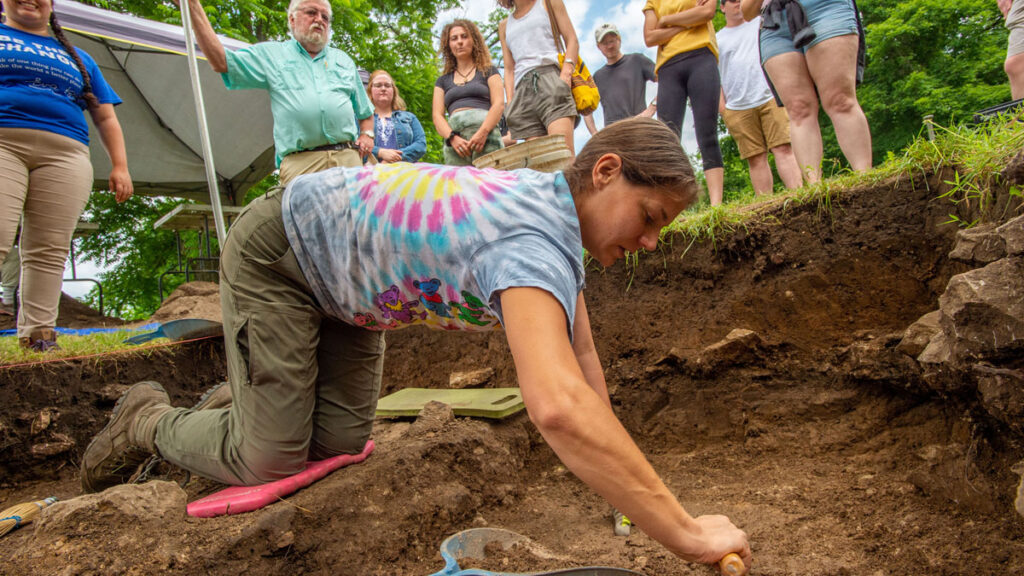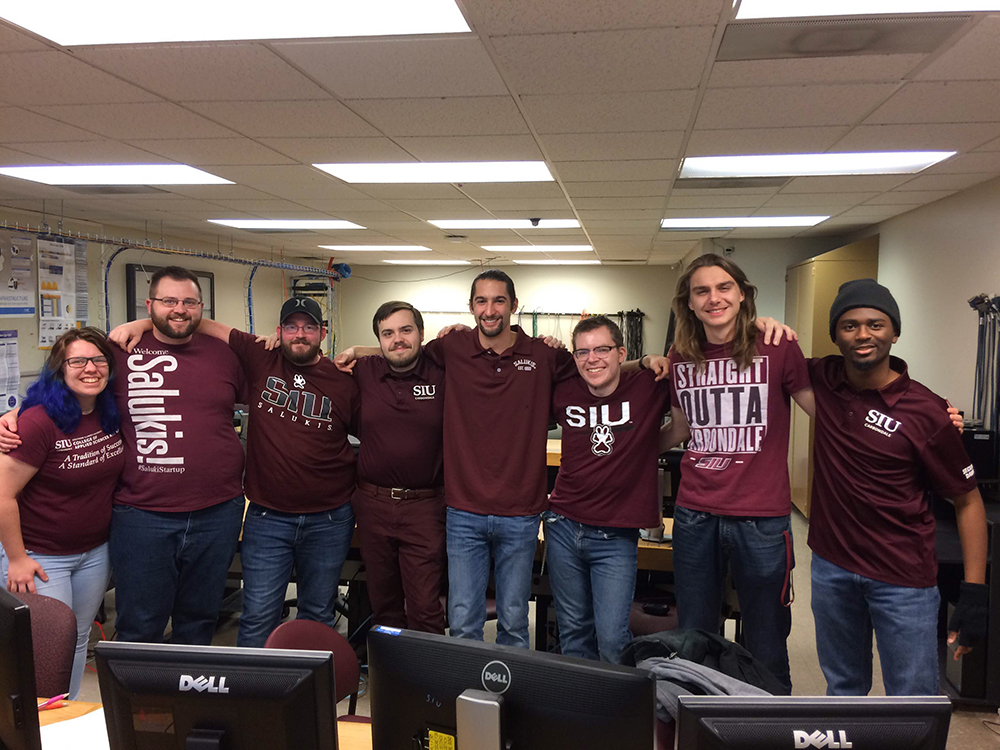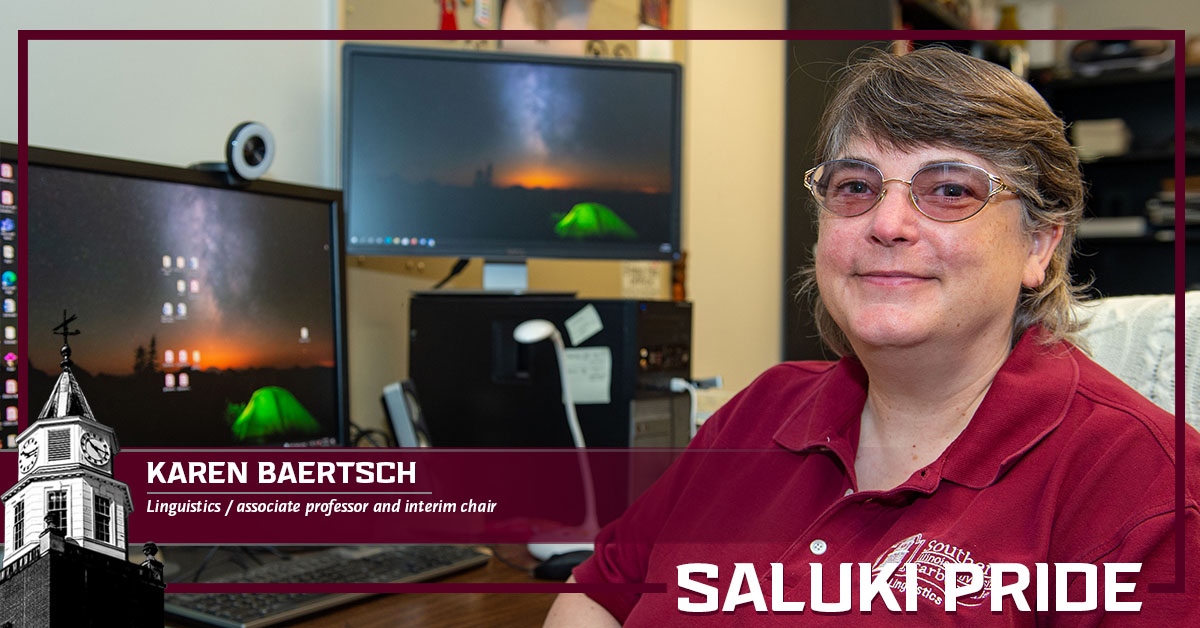
For Jane Neubauer, a senior in Southern Illinois University Carbondale’s anthropology program, there is a definite thrill in finding an artifact during a dig.
Neubauer and nine other students from seven universities, including SIU Carbondale, have spent the last month at the Fort Kaskaskia State Historic Site in Randolph County excavating French and American forts once visited by the Lewis and Clark Expedition. Students finished the six-week Center for Archaeological Investigation’s (CAI) Field School last week.
“It’s cool to hold something that no one has touched for a couple hundred years. It’s like that person has come back to life,” said Neubauer, from Orland Park, Illinois, who wants to be a marine biologist.
“This is an adventure you can still have in the 21st century,” she said.
Field school discovered American fort in 2017
Historians had long believed that Fort Kaskaskia served as a fort for both 1750s French and early 1800s American troops. The most prominent event in the history of the fort was a visit by the Lewis and Clark Expedition in 1803 to recruit 11 soldiers to explore the American West.
But after two seasons of work, the team of SIU archaeologists and students concluded that, in fact, two separate forts — one French and one American — were constructed near each other at what is now Fort Kaskaskia Historic Site. The two forts are separated in time by 45 years.
This year’s field investigations at Fort Kaskaskia had students concentrating on delimiting the boundaries of and locating structures, cellars and other features at both sites through a combination of remote sensing technologies and hand excavations. In addition, the field school continued work on previous investigations at the Miller Grove site in Pope County.
Artifacts will go to Illinois State Museum
Mark Wagner, CAI director and professor in anthropology, said that all artifacts recovered by this year’s field school as well as student notebooks, maps and photographs will be permanently curated at the Illinois State Museum. The reason is to ensure that the artifacts and other records are preserved for future researchers as well as the citizens of Illinois.
During this year’s field school, students found artifacts associated with the daily life of 18th and 19th century soldiers and civilians at both fort sites, including animal remains. At the American fort, students investigated a filled-in cellar that contained numerous uniform buttons of the 1st and 2nd Infantry regiments to which the Lewis and Clark men belonged, smoking pipe fragments, bottle parts and other items. Particularly notable were the recovery of complete bricks that had been handmade by U.S. Army soldiers for their fireplaces and chimneys between 1803 and 1806. At the French fort, students discovered a large pit with a flat bottom that appears to be a shallow cellar to a building. Items within the pit included a complete iron adze woodworking tool that would have been used to shape the timbers of the fort.
Under an agreement with the Illinois Department of Natural Resources, CAI will clean and analyze all of the recovered artifacts before sending them to the Illinois State Museum. Wagner writes an annual report on what each field school finds.
Field school experience is valuable
The class helped Jeffrey Smith, a senior in anthropology from Shelbyville, Illinois, focus on his future goals.
“I heard about the field school and thought, ‘I have to do it,’” he said. “Now that I’m here, I know this is what I want to do with my life.”
Jessica Spencer, a doctoral student in anthropology and site director, said students attending the field school will potentially find it easier to get jobs in the archaeology field “because of their experience at this site.”
“The most important thing is that, as students, they spend a lot of time reading about archaeology in the field,” she said. “Here they are getting to do what they’ve read about, they are gaining practical experience.”
The field school experience wasn’t just for students. Marti Crothers, a retired, three-degree SIU alumna volunteered after hearing Wagner discuss it at an event for university retirees.
“This is real history; this is important for the region,” she said.
Draws nationwide interest
Four SIU Carbondale students are participating this year in the field school, which draws students from throughout the United States. Students from seven universities are attending this year.
Gavin Turowski, from Farmingdale, New York, is a student at Mount Hope College in Maryland and is attending on a field school scholarship. The experience has helped him narrow his focus in the archaeology/anthropology field.
“I immediately fell in love with ethnohistory,” said Turowski, who added he is considering SIU for graduate school.
The 10 students involved in field school work this summer are:
Southern Illinois University Carbondale: Nala Herrell, Jane Neubauer, Jeffrey Smith, Gabrielle Showalter.
Hood College: Gavin Turowski.
Mineral Area College: Joshua Reinbolt.
Purdue University: Jenny Torres.
University of Evansville: Sam Kastner.
University of Georgia: Cat Nienaber.
Wittenberg University: Riley Nagy.
More information on the Center for Archaeological Investigations is available by contacting Wagner at mjwagner@siu.edu or 618-453-5031.







